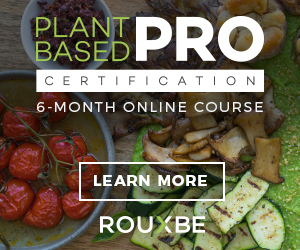How to make hollandaise sauce
Hollandaise sauce is one of the most popular sauces in French cuisine. It's used as an accompaniment for eggs and fish, but also for vegetables like asparagus and artichokes. The key to making hollandaise sauce is knowing when your egg yolks are ready to emulsify with butter or oil.

If you aren't careful, it can break down into a curdled mess! Luckily, there's an easy way to test whether they're ready: take a small spoonful of your sabayon (a foamy mixture) and place it in a small bowl of ice water. If it floats on top without sinking or dissolving into the water within 60 seconds, you know it's ready.
Hollandaise sauce is an emulsified butter and egg yolk sauce made with a reduction of vinegar or lemon juice.
Hollandaise is an emulsified butter and egg yolk sauce made with a reduction of vinegar or lemon juice. It's typically used as a sauce for asparagus and eggs Benedict, but it can also be served with salmon or steak.
The ingredients in hollandaise are:
- 1 cup clarified butter
- 1/2 cup egg yolks
- Juice of 1/4 lemon (or to taste)
- Egg yolks, lemon or vinegar, and butter.
To make hollandaise sauce, you will need to clarify the butter. Clarified butter is melted and strained, leaving behind any impurities that would cause it to break down in the mixture. If you do not have time for this step, use clarified butter instead of regular butter. The vinegar or lemon juice is also essential as they help increase the acidity level of your sauce while keeping it smooth and creamy.
The first step in making hollandaise sauce is beating egg yolks over heat until they become thickened and frothy; this process should take about 6 minutes on low heat with constant whisking until you achieve a pale yellow coloration. Next, add clarified butter slowly while continuing to whisk until all ingredients are incorporated into one smooth mixture; serve immediately or cover with plastic wrap directly onto the surface so that no air gets in contact with it before refrigerating for up to 2 days (will keep longer if stored properly).
A sabayon is a foam made by whisking hot liquid with egg yolks over heat to thicken it.
A sabayon is a foam made by whisking hot liquid with egg yolks over heat to thicken it. It's used in sauces like hollandaise and béarnaise but also as a garnish.
To make a sabayon, add the egg yolks and sugar to a stainless steel bowl placed over simmering water. Whisk continuously until the mixture thickens and lightens in color from yellow to white (this will take about 3 minutes). Remove from heat and whisk the butter bit by bit as you did for mayonnaise until smooth.
The yolks will have a pale yellow color and have increased in volume by at least half.
At this point, the yolks should be cooked to a pale yellow color and have increased in volume by at least half. If the yolk is too hot, it will break down and look like scrambled eggs. To avoid this, don't overheat the egg yolks when whisking them, and make sure you add cold butter slowly so that there is no change in temperature as you add it. Also, make sure not to use a whisk with a plastic handle; they are more likely to break under pressure than metal ones.
Don't stop or pause while adding the butter; keep whisking continuously until all of it has been incorporated into your sauce—even if that means using both hands.
While whisking the sabayon (a foam made of hot liquid and egg yolks), melt the clarified butter and slowly add it to the foamy mixture until all the butter has been added and the sauce is smooth, glossy, thick, and pale yellow in color. Season with salt, pepper, and lemon juice if desired. Add warm water if making a béarnaise to thin your hollandaise toward a pourable consistency. For other derivatives like hollandaise, follow your recipe for ingredients.
Once the sabayon mixture has foamed, add the clarified butter slowly and at a low temperature. You want to stir gently until all of the butter has been incorporated into the mixture, and then continue to cook until your sauce is thickened and shiny about 5 minutes. Season with salt, pepper, and lemon juice if desired.
If you'd like your sauce to be even richer in flavor, consider adding warm water as needed for consistency (for example, for béarnaise).
The key is not to get too much liquid into it since it will break down again when you try to thicken it further by adding more egg yolks; if this happens, put everything back on low heat until it comes together again before taking off the heat entirely.
Keeping your hollandaise at about 140 degrees Fahrenheit (60 degrees Celsius) will prevent it from breaking down and allow you to hold it for longer periods of time than if you were to cool it all the way down to room temperature. For best results, hold in a double boiler or on top of a bain Marie so that the temperature never dips too low or rises too high.
You can tell when your sauce is ready when it's thickened and barely starting to turn opaque. It'll be hot but not bubbling; if bubbles appear on top of your mixture, you're making beurre blanc instead! If this happens, take everything off immediately and start over—you don't want any oily residue left behind on your whisk.
Conclusion
Hollandaise sauce is an emulsified butter and egg yolk sauce made with a reduction of vinegar or lemon juice. It has many derivatives, but the base is always the same: egg yolks, lemon or vinegar, and butter. It’s a rich sauce served hot or cold on vegetables, fish, or eggs. It also has many derivatives, such as Bearnaise and Béarnaise sauces. The difference between this sauce and others is in the preparation method: it uses whole eggs instead of just yolks.
By Dat Milton



